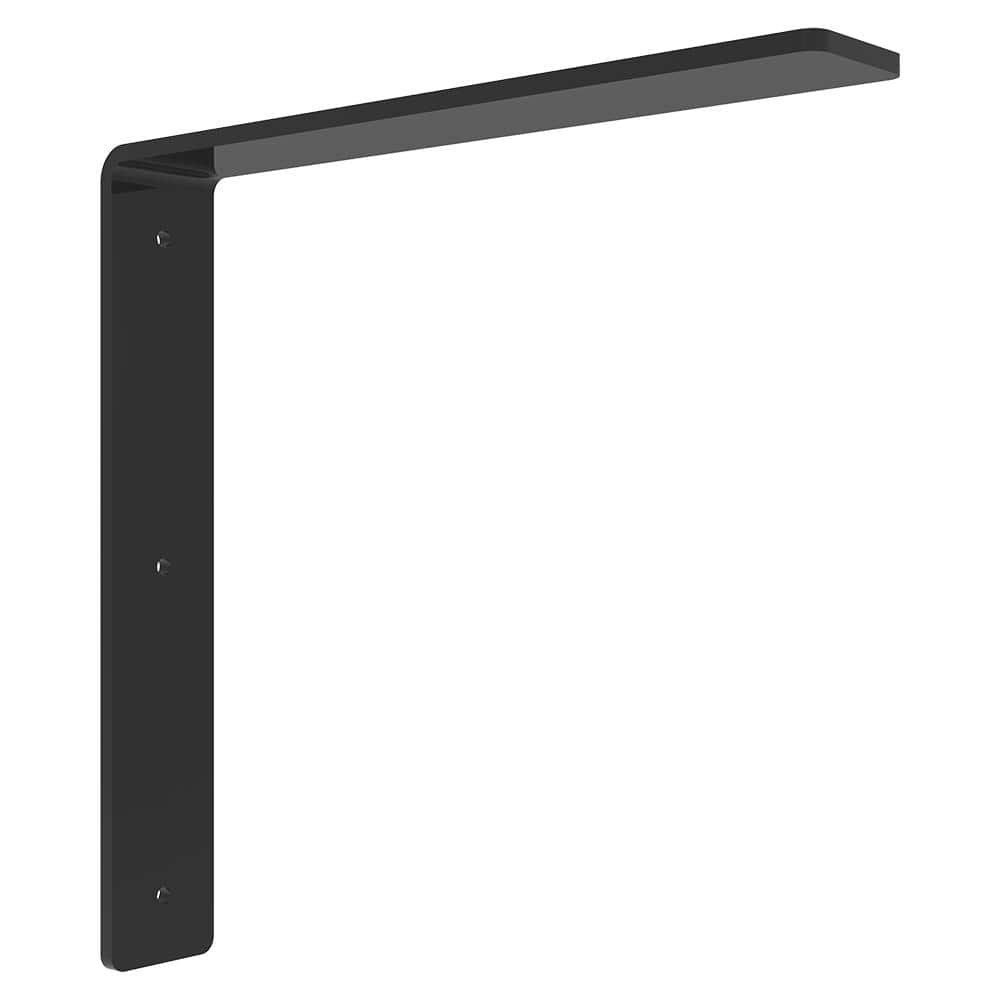Federal Brace 20 in. L Black Steel Low Profile Adjustable Countertop Island Support Bracket
Hidden bracket helps create a floating countertop effect. Made of high-grade steel for strength and durability. Provides maximum legroom under the countertop for comfort.
Our Freedom Hidden Countertop Bracket provides exactly what its name implies. With the hidden bracket design of these metal supports, you can create a floating countertop appearance. The Freedom countertop bracket also provides the maximum legroom under your countertop area. With our hidden countertop brackets, you are liberated from the annoying knee knocking in cramped spaces.
- Carry capacity 375 lbs.
- Install every 12-18 in
- Uses 1/4 in lag screws not included
- No more than 4 in of counter beyond end of bracket
- 2/3 of surface should rest on base cabinet
- Black powder coat finish for optimal protection
- Maximum leg room under floating counter
- Not for use in wall hung applications
Additional information
| Product Length (in.) | 20 in. |
|---|---|
| Product Thickness (in.) | 0.50 in |






by Gerald
The bracket is very robust and works well.
by Gary
These brackets were received promptly and are strong. Don’t purchase the countertops from Home Depot for your kitchen remodel, they will not be ready until eight weeks after your cabinets are installed. You will be without a usable kitchen in that entire time. I was not happy with a door they installed for a previous project and I would avoid using them for any type of installation. Also do not purchase extended appliance warranties from them because the company they use, Asurian, will give you the runaround rather than scheduling a repair.
by John
Parts as required for granite counter overhang, counter not yet fitted.
by Gina
It is super simple and sturdy just like what we want for our new countertop.
by Mike
Solid construction, easy to mount & true 90 degrees.
by Fred
Exactly what I needed to support a 6×3 foot countertop covering a washer/dryer in a laundry room. Exceeded my expectations.